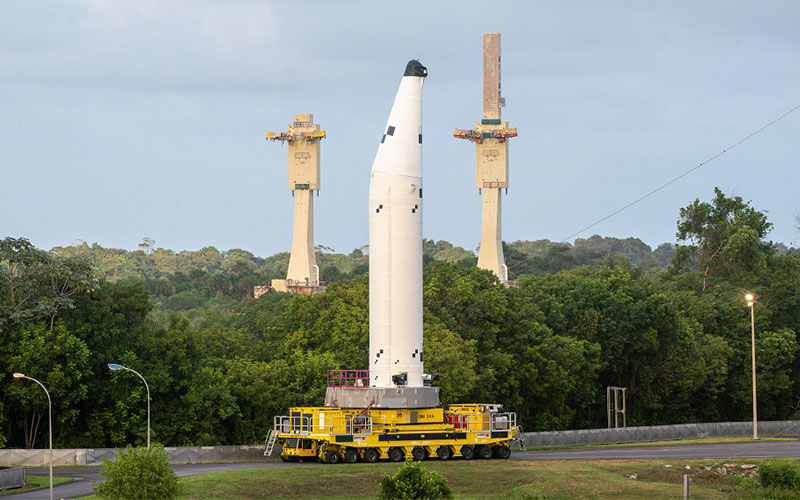
As preparation continues for the maiden flight of Ariane 6, CNES has successfully qualified a new flatbed transport vehicle that will be used to move the rocket’s P120C boosters to and from production facilities, a storage building, and the launch site for integration.
Ariane 6 can be launched in two configurations featuring either two or four solid-fuel P120C boosters. Each booster has a total mass of around 140 tonnes. Transporting these colossal elements of the Ariane 6 launch system, as a result, requires a specialized vehicle.
The Next Generation (NG) booster transport vehicle was developed by the Italian company Cometto. The NG transport vehicle is the third built by Cometto to transport Ariane boosters around the Guiana Space Centre. The AIT200 and AIT250 flatbed transport vehicles both served Ariane 5 missions from 1990 onward, with the AIT250 vehicle also used for Ariane 6 booster transportation during testing.
Powered by two 235 kW Volvo engines and two 566 kW Scania engines, the NG transport vehicle can be operated in two transport configurations, one for Vega-C boosters and the other for Ariane 6 boosters. The two configurations differ in the specific accelerations, no-load and laden speeds, and decelerations.
The NG transport vehicle measures 19 metres in length and 5.5 metres in width, and has a load capacity of 250 tonnes. When loaded, it can travel at speeds of around 15 km/h, an increase from the 5 km/h of the previous generation AIT250 transport vehicle. When empty, it has a top speed of 25 km/h, up from 16 km/h for the AIT250 vehicle.
Following a technical qualification phase, the NG transport vehicle entered service on 8 March and was immediately put to work transporting the first flight version of an Ariane 6 P120C booster.




